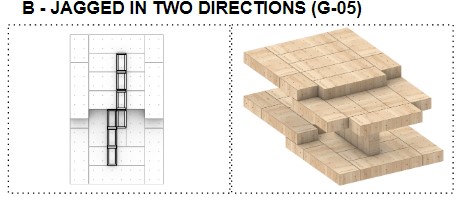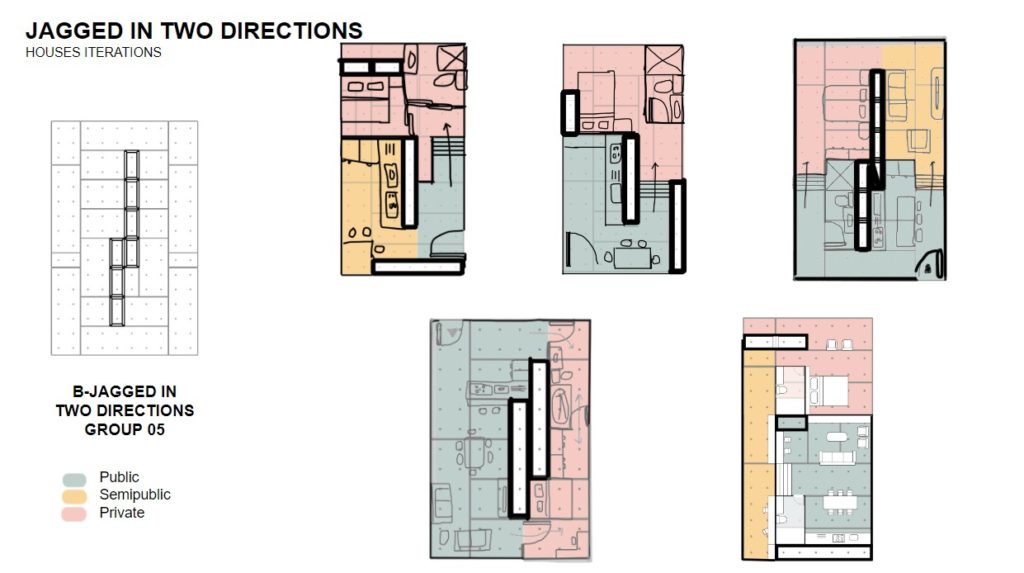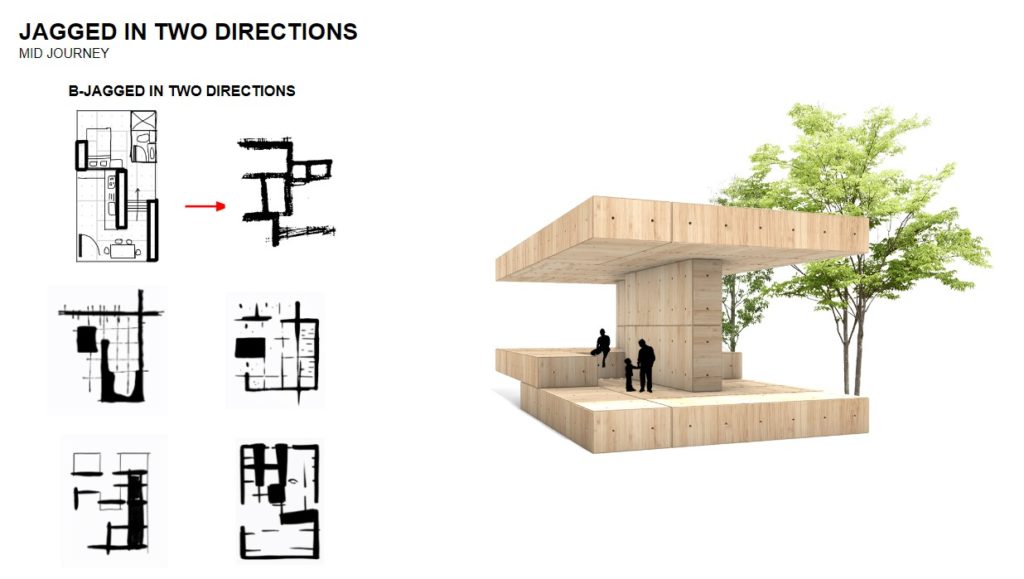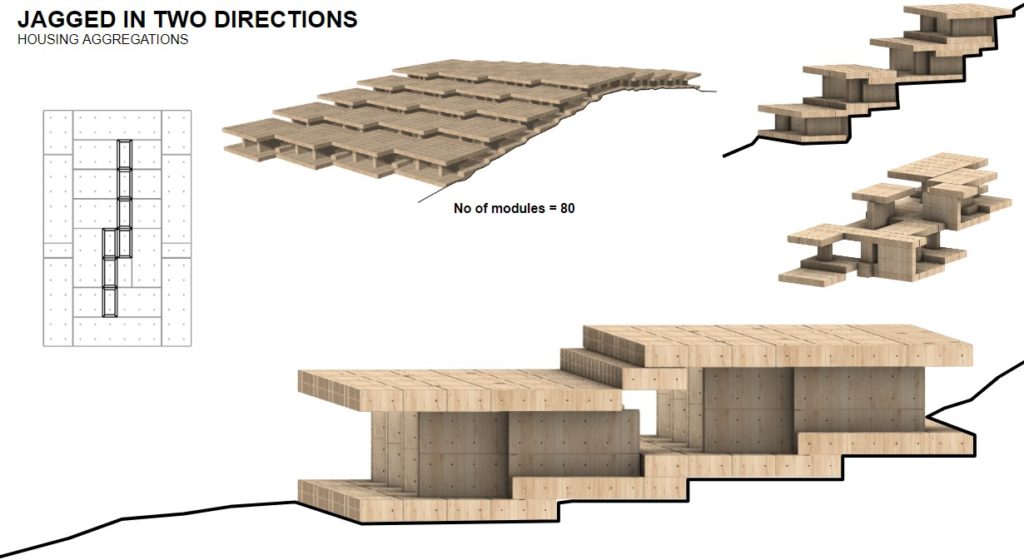Parts that Precede Buildings
This course helped us to gain a comprehensive understanding of discrete building systems with the use of prefabrication and automation. During this one week workshop, discussed topics such as timber prefabrication, robotics and discrete computation for later on participating with a hands-on approach to build several structures using timber boxes and postension cables.
The pictures below show the process of the first step of the workshop. Here we could understand the material we were going to work with and started building the components. The pieces were made of wood 10mm thickness, they were cutted in their shapes and sizes with holes in them for the post-tension cable to pass through them.
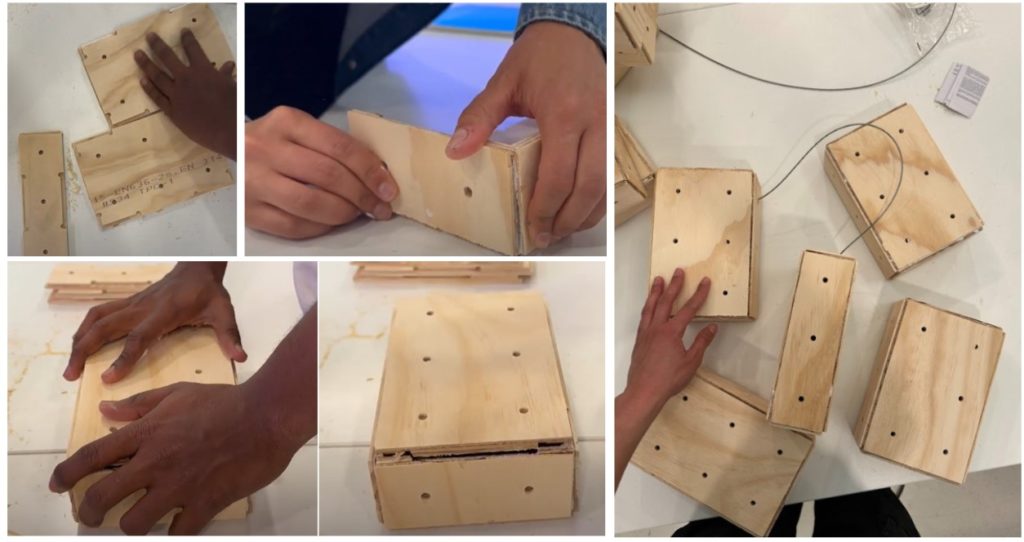
Once we had the boxes ready, we started making iterations with them and had a look on how we could build different structures. Some of the iterations are shown on the images below:
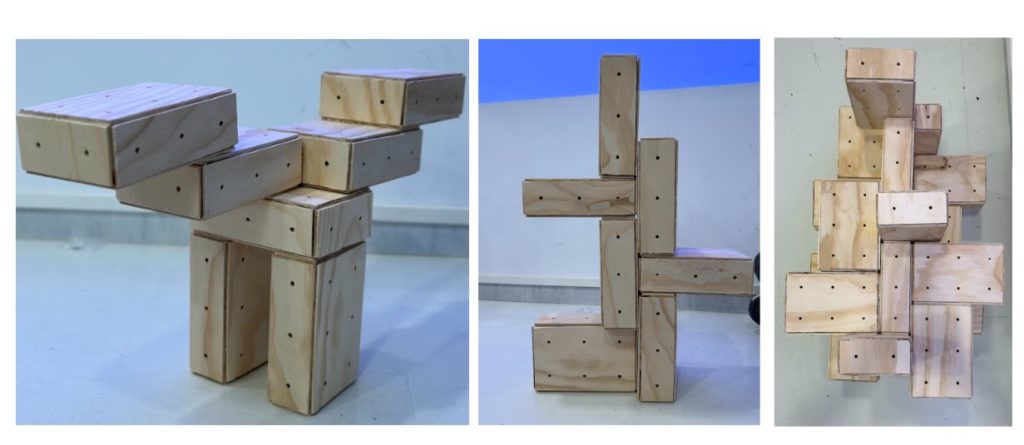
After this step, we started playing and multiplying the geometries in order to generate a bigger picture of what it could look like in another scale and with a larger architectural approach
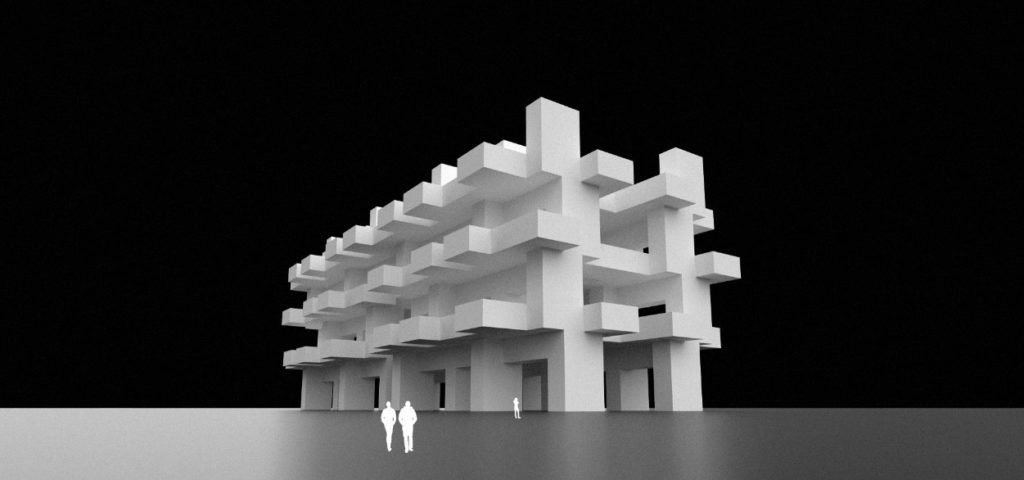
Once we had the knowledge on how to use the material, we learned how to generate catalogue sketches using out own drawings and merging/blending them using the generative artificial intelligence program MidJourney. These output catalogues shown below helped us to have another approach of visuals for a floor plan or a house. The sketch was afterwards taken into Rhinoceros and Grasshopper, where we used a pre-designed algorythm to input the sketch generated by midjourney and it would generate the columns accordingly to it.
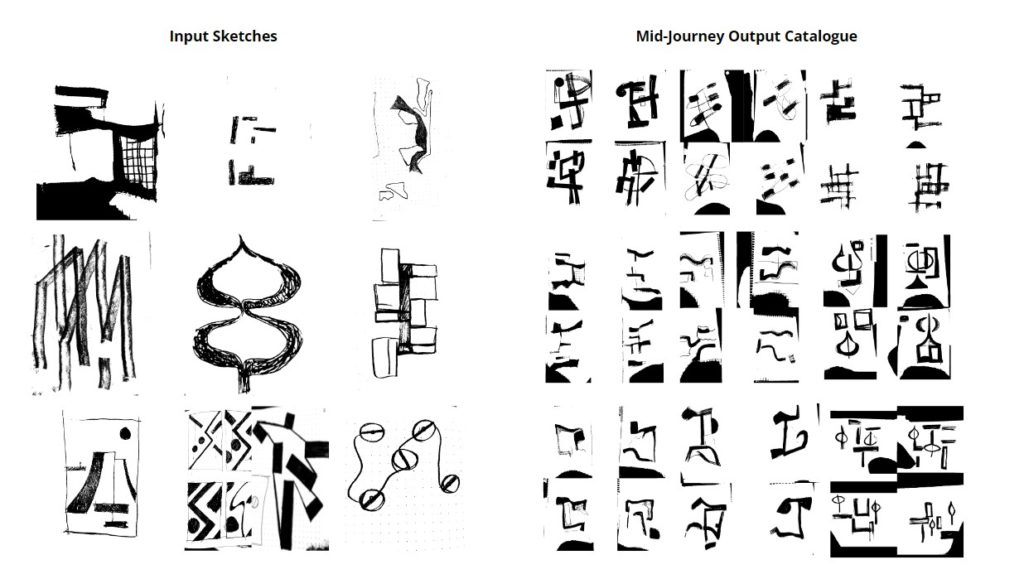
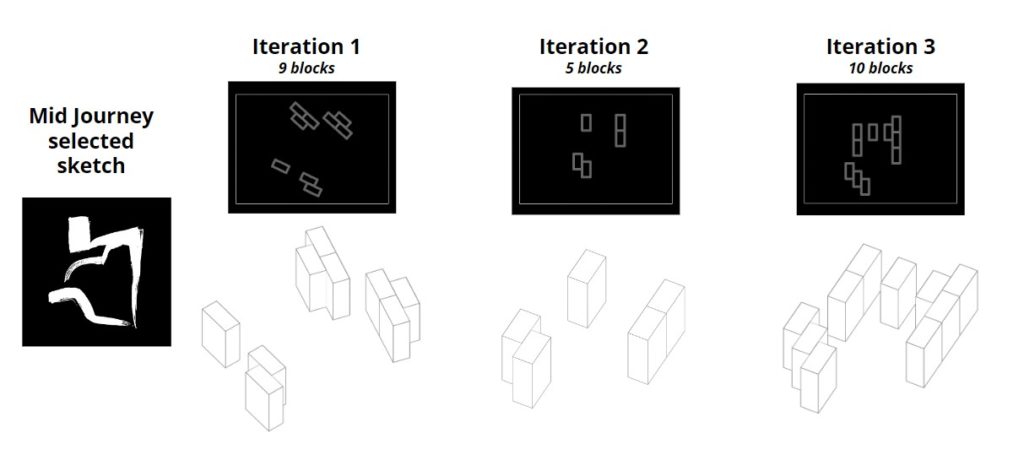
From the iterations, we selected the one we find more interesting and created a slab accordingly with the same algorythm. After we had our result, in a 3d model, we took the wooden boxes and actually built the house. The images of this process is shown below:
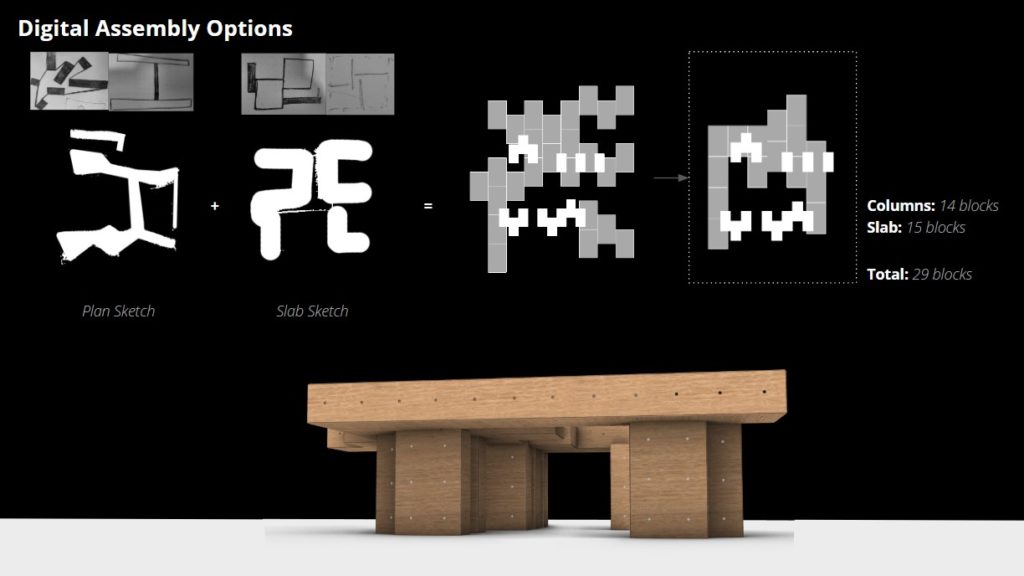
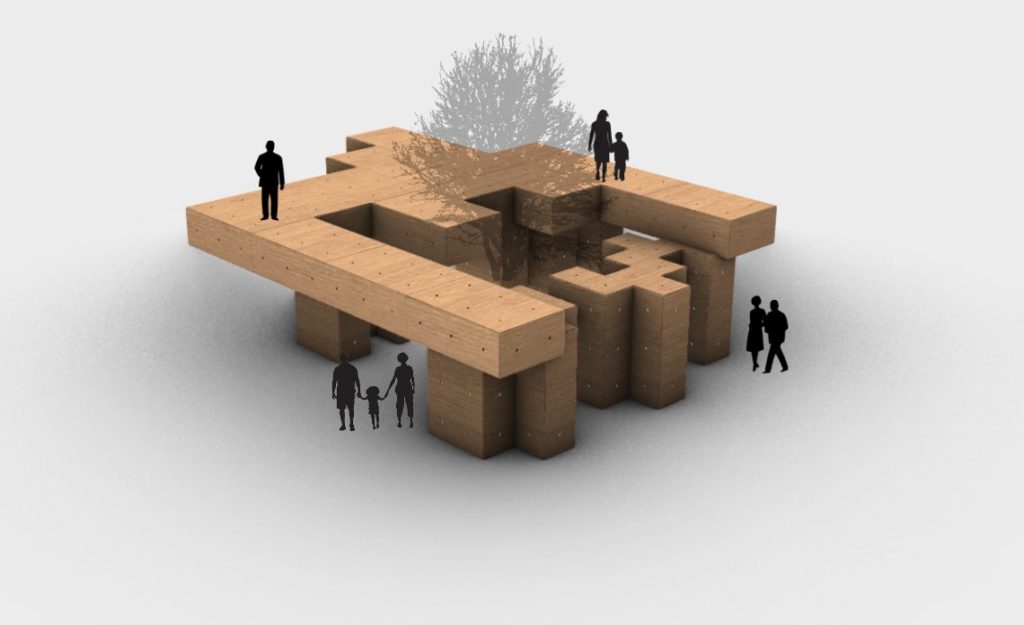
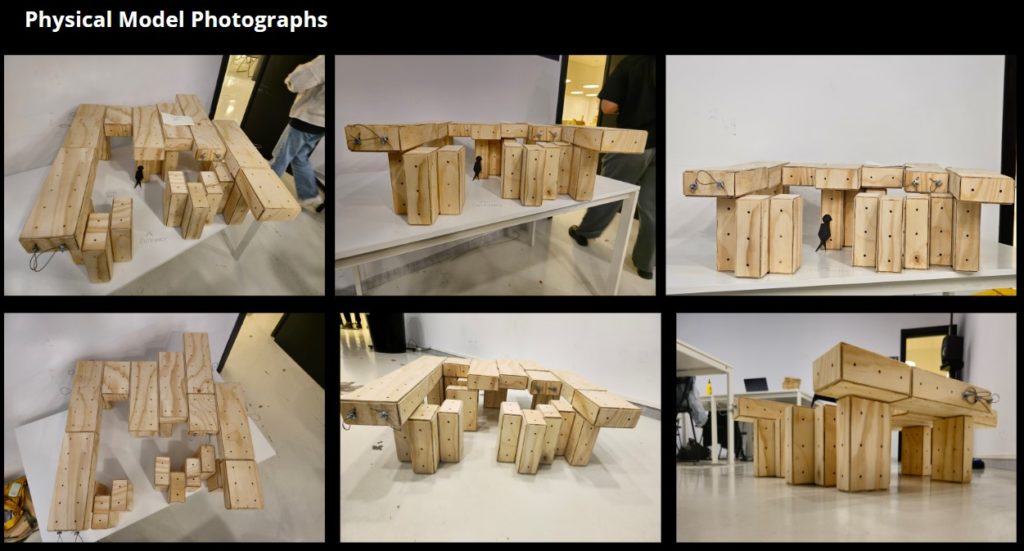
After this first attempt on building an algorythm + AI house, we had the task to build a pre-established design house called “Jagged in two directions”. We had the freedom on taking the design as it was at the beggining and playing with the columns and overall design to generate different house plans iterations and models. The workshop finally ended with a design which was improved by the algorythms and was built in real life to present it as an architectural approach of a discrete-assembly house. This house was then multiplied to generate a housing approach, which would be for the future steps of the idea. The final procedure and result is shown on the images below:
